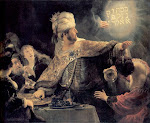But sometimes interesting or insightful graffiti takes simpler forms like handwriting in felt tip marker or paint stenciled images. The bear stenciled in orange below evokes the Grateful Dead style bear and the overspray on the top of the image seems to suggest a fire in the distance or perhaps the sun rising or setting on a horizon - the ambiguity is powerful whether deliberate or not.
I had originally misread the stencil below to read "BOULET!" which turned up nothing in Google, but when my wife saw the image she immediately recognized Robert Goulet whose varied multimedia career was unknown to me. Outside of his many entertainment accomplishments, I couldn't figure out why he would be the subject of a stencil until I heard of the "Robert Goulet Memorial Mustached American of the Year" award.
I could be wrong, but my guess is the stenciler thought that anyone with a mustache impressive enough to inspire an award was worthy of becoming a graffiti stencil.
Stenciling technology is an inexpensive and portable method of increasing the uniformity and production speed of images but felt-tip markers are even cheaper and faster for producing text. We might be more likely to dismiss marker graffiti since much of the illicit handwritten messages we see on various public surfaces are predictably low in depth of content but high in graphic sexual invitation - which are at least better than hateful, bigoted graffiti - or at least I think so.

But if we were to dismiss handwritten marker graffiti because of such sensual suggestion we might miss some intriguing statements & questions or perhaps some unexpected wisdom and truth.
















